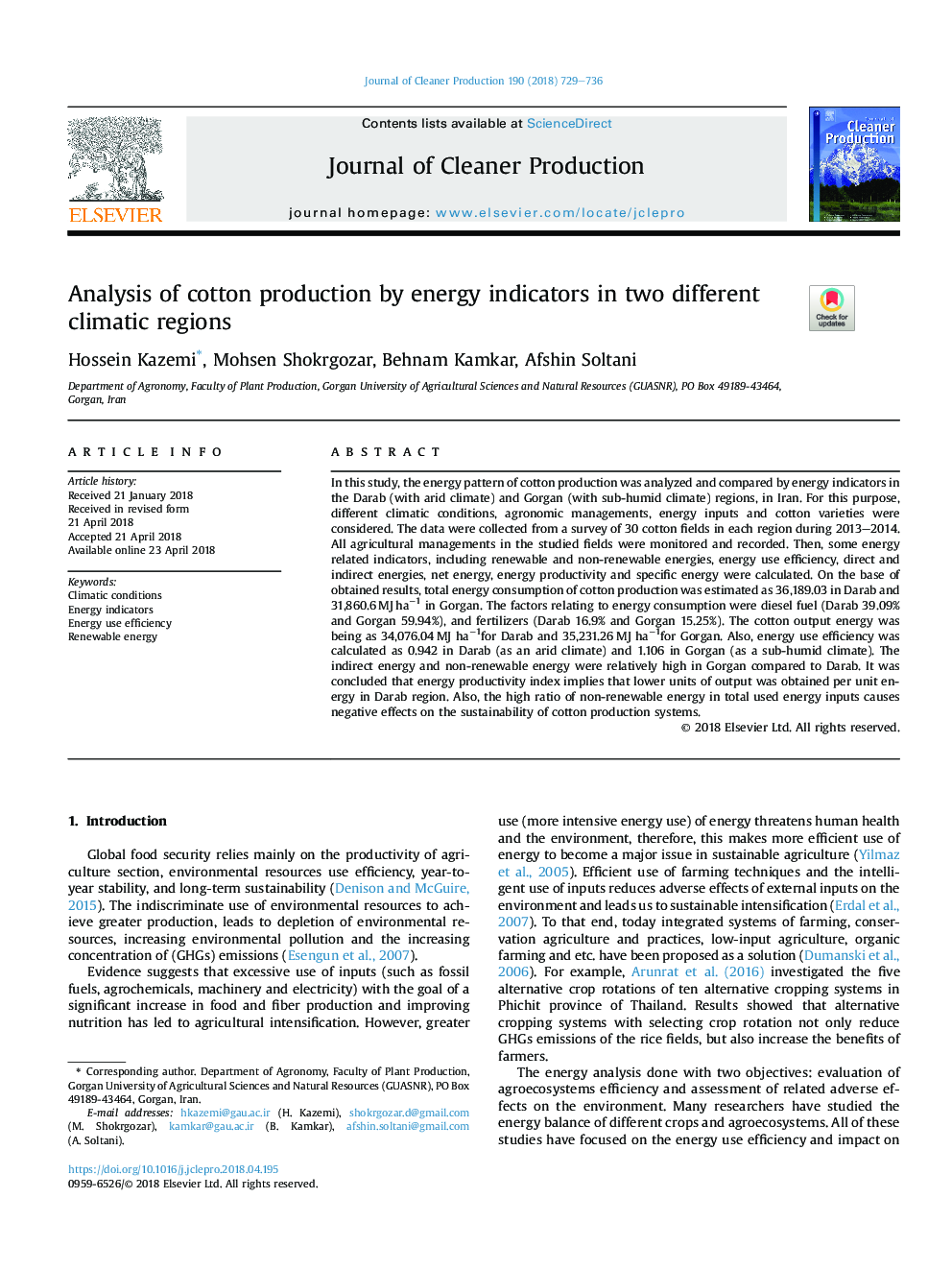| Article ID | Journal | Published Year | Pages | File Type |
|---|---|---|---|---|
| 8095030 | Journal of Cleaner Production | 2018 | 8 Pages |
Abstract
In this study, the energy pattern of cotton production was analyzed and compared by energy indicators in the Darab (with arid climate) and Gorgan (with sub-humid climate) regions, in Iran. For this purpose, different climatic conditions, agronomic managements, energy inputs and cotton varieties were considered. The data were collected from a survey of 30 cotton fields in each region during 2013-2014. All agricultural managements in the studied fields were monitored and recorded. Then, some energy related indicators, including renewable and non-renewable energies, energy use efficiency, direct and indirect energies, net energy, energy productivity and specific energy were calculated. On the base of obtained results, total energy consumption of cotton production was estimated as 36,189.03 in Darab and 31,860.6â¯MJâ¯haâ1 in Gorgan. The factors relating to energy consumption were diesel fuel (Darab 39.09% and Gorgan 59.94%), and fertilizers (Darab 16.9% and Gorgan 15.25%). The cotton output energy was being as 34,076.04â¯MJ haâ1for Darab and 35,231.26â¯MJ haâ1for Gorgan. Also, energy use efficiency was calculated as 0.942 in Darab (as an arid climate) and 1.106 in Gorgan (as a sub-humid climate). The indirect energy and non-renewable energy were relatively high in Gorgan compared to Darab. It was concluded that energy productivity index implies that lower units of output was obtained per unit energy in Darab region. Also, the high ratio of non-renewable energy in total used energy inputs causes negative effects on the sustainability of cotton production systems.
Related Topics
Physical Sciences and Engineering
Energy
Renewable Energy, Sustainability and the Environment
Authors
Hossein Kazemi, Mohsen Shokrgozar, Behnam Kamkar, Afshin Soltani,
